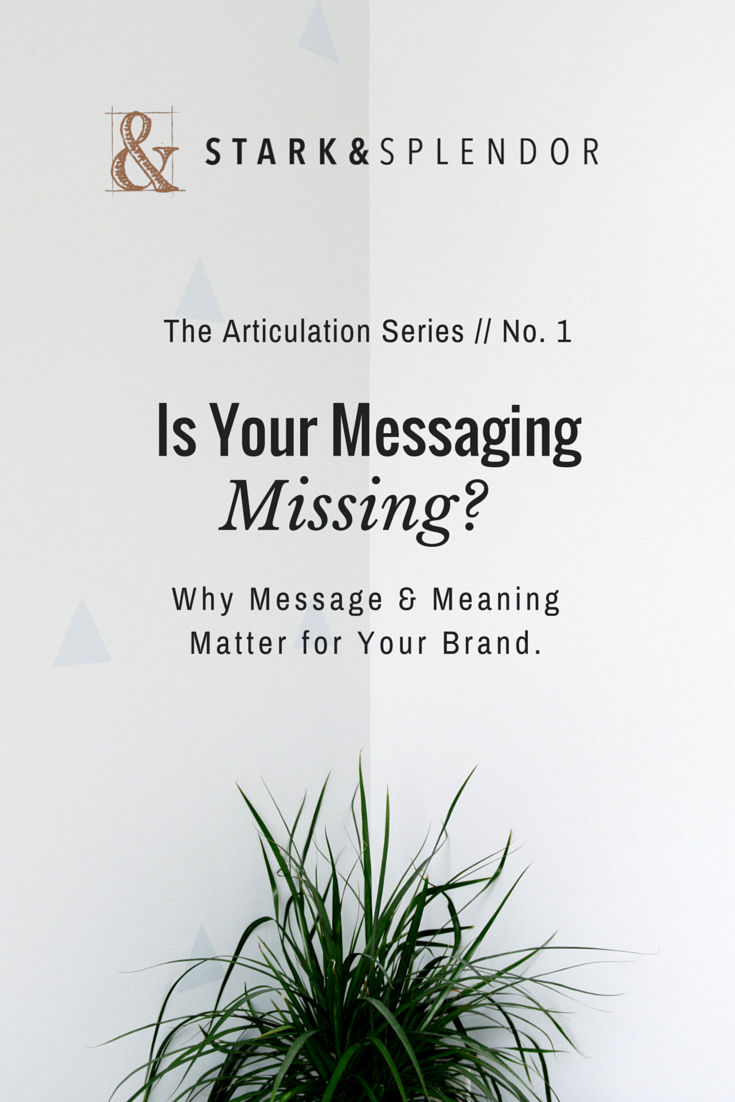When you’re an entrepreneur or small business owner, writing becomes a part of your job whether you consider yourself a true "writer" or not. Between website copy, press releases, email newsletters and advertising copy, it can feel daunting to represent your brand in words.
While our Articulation Intensive can help put you on the right track to creating and articulating the message and voice of your brand, there are still the smaller, day-to-day aspects of writing that can be intimidating. To help you produce copy that’s clear, brand-aligned and (mostly) error-free, I’ve put together a few tricks and resources that help me self-edit my writing.
1. Don’t forget the "first" part of first draft.
It’s easy when writing to get frustrated if the words just aren’t flowing. But rather than try to revise as you write or continually delete what you’ve put down already, just try and push forward. Remind yourself that it’s only your first draft and you’ll be able to change and edit anything you don’t like. Aim to get all your thoughts on paper first, then worry about condensing, organizing and making it all sound on-brand. Your first draft will almost never be perfect, and that’s perfectly fine.
2. Give yourself a deadline.
Since there’s no one "right" way to write anything, drafting a piece of content can turn into a never-ending task. You could theoretically revise something forever, but that’s definitely not a good use of your time. Instead, set deadlines for yourself for the first draft and subsequent edits and revisions. For example, tell yourself you have one hour to get a first draft done and set a timer. The looming buzzer will keep you focused on getting all your ideas down on paper and help limit staring at a blank screen or minor revising during your initial stages. For other drafts, give yourself a limit to the number of revisions you’ll do (say two or three rounds of revisions tops for example) and if you’re still unhappy with the piece at that point it’s time to call in some help.
3. Follow my "Write. Rest. Revise." method.
This means I’ll write a first draft of copy (whether it’s a blog post, press release, whatever) and then take a break before going back to edit it. Even taking 15 minutes to switch focus on another task or step away from my desk allows me to see my first draft with fresh eyes and makes it easier to spot mistakes or changes I want to make. For larger pieces of copy or if I struggled a bit with the first draft I’ll try and give myself a longer break to have time to relax and consider what I’m really trying to say with the piece. That way I’m in a better place to re-read and revise. Try and give yourself time to do the same, but if you’re really in a rush, even just a minute or two of looking away from the screen can help give you a new perspective on what you’ve written.
4. Read out loud.
Is reading your work out loud a bit awkward? Yes. Does it help catch typos and make your work sound more conversational? Also yes, so it’s worth a little awkwardness in my opinion. Often when you’re reading your own writing it can be easy to not notice missing or incorrect words or skip over phrasing that doesn’t totally make sense or is hard to read. But when you slowly read something out loud (key word here: slowly), you’ll be able to catch a lot of these mistakes easily. If you’re worried about people overhearing, at least mouth the words as you read, it’s not quite as good but still better than merely skimming with your eyes.
5. Enlist an eagle-eyed friend or coworker.
When you’ve gotten your copy to a point where you’re pretty happy with it, ask someone you trust to read it over and point out any grammar or spelling mistakes or anything that seems unclear or off-target with what you’re trying to do. Someone familiar with your brand voice is ideal, but anyone with a good eye for typos will be helpful. Of course, you don’t need to do this for every piece of content you write, but it’s a good idea for anything important.
6. Keep a checklist of common mistakes.
These will vary from person to person, but it’s good to be aware of and check for the common writing mistakes you make. Try keeping a post-it note on your monitor with your big things to watch out for and add to it as necessary. Then, as you’re editing your work run down the list and make sure you’re checking for each element.
A few common mistakes that may make your list:
- Skipping words or swapping small ones (like swapping "to" for "or", for example)
- Switching from present to past tense in the same piece of writing
- Switching from first to third person in the same piece of writing
- Inconsistencies in style, like capitalizing your business name in some instances but not all, using people’s first and last names interchangeably, using bullet points in part of an article and numbered lists later on, etc. (This doesn’t mean you can’t mix up the style of your writing sometimes, but it should be intentional and serve a purpose, not because you didn’t realize you were doing things differently from the beginning to the end of a piece.)
- Using industry jargon or other language that’s off-brand
- Writing long blocks of text that are hard to read on the web or in an email
- Burying the lede, a newspaper term for putting the important information at the end of a piece instead of the beginning
7. Stash these resources on your desk.
If you’ll be writing press releases, guest articles or communicating with journalists then buying a copy of the AP Stylebook or signing up for the digital version is a good idea. It will help you style your writing in a way that journalists will appreciate — and making busy journalists happy is a great way to boost your chances of getting coverage. There’s no need to memorize the book, but give it a skim, or do some searching if you opt for the online version, to see what sorts of words, titles and phrases have a specific formatting (it’s probably a lot more than you think).
Another great book to have handy is The Elements of Style by William Strunk, Jr. and E.B. White. It covers the basics of grammar and style and will help you write clear, succinct copy easily. It’s been around forever for a reason, the lessons are timeless and incredibly helpful.
8. Remember that your web text isn’t set in stone.
One of the best things about the web versus print writing is that you can change your copy even after it’s published. Of course, you should aim to have your text as perfect as possible before it goes live, but you can also have the reassurance that you can update your copy if you spot an error or get feedback from customers. And overall you should aim to keep your website as up-to-date as possible and change your "about us" or "news" pages whenever you have an update.

















